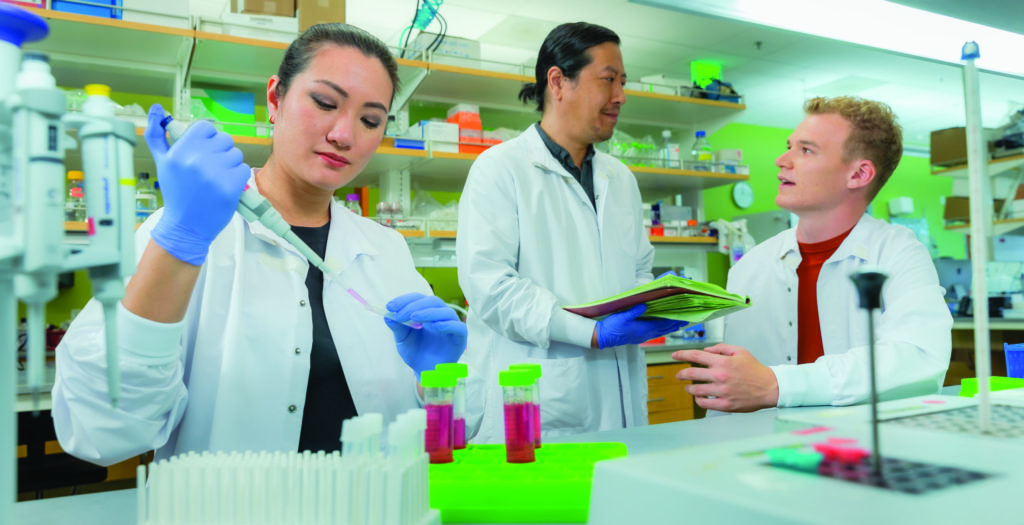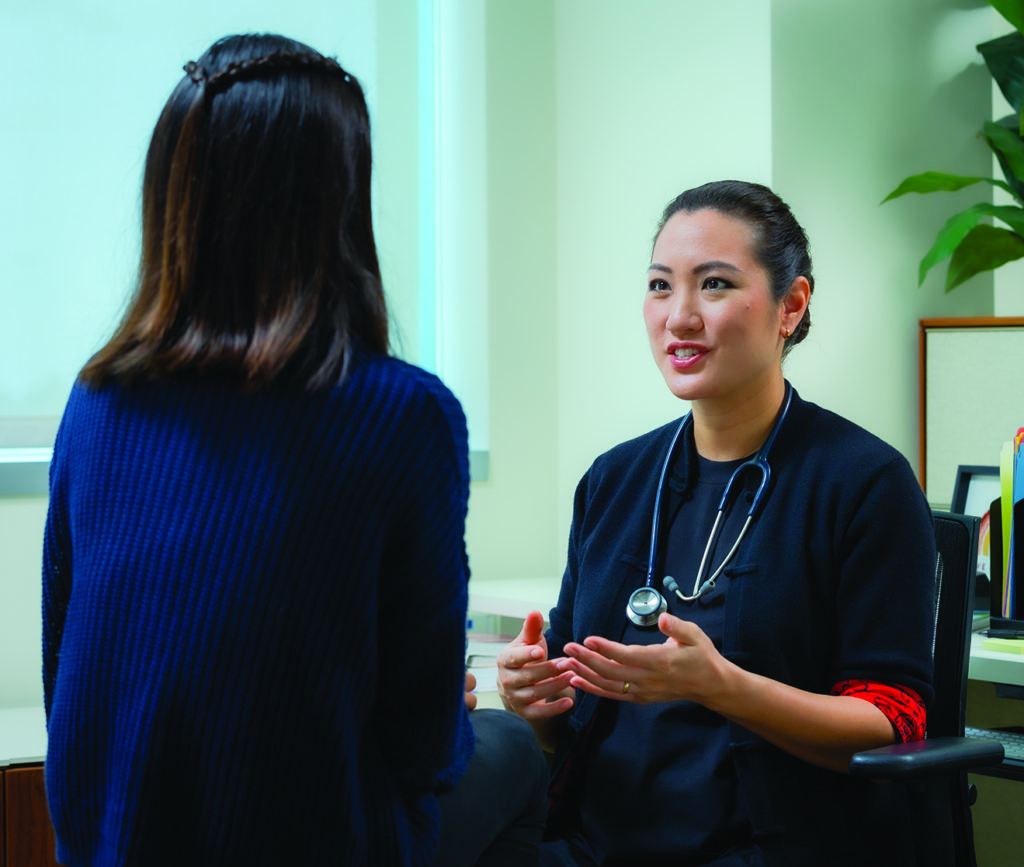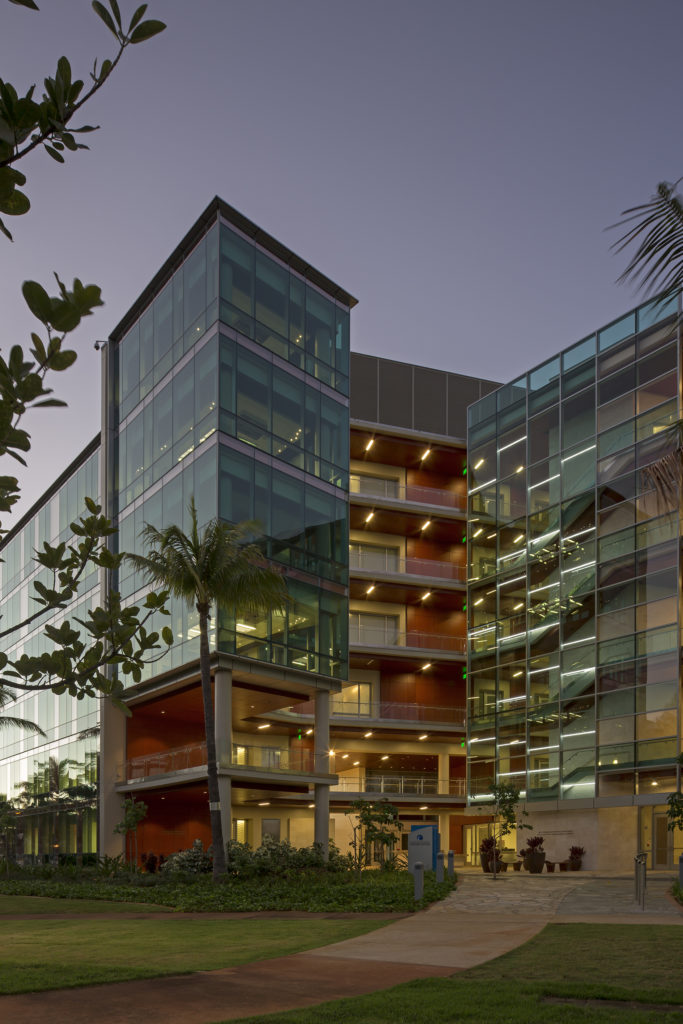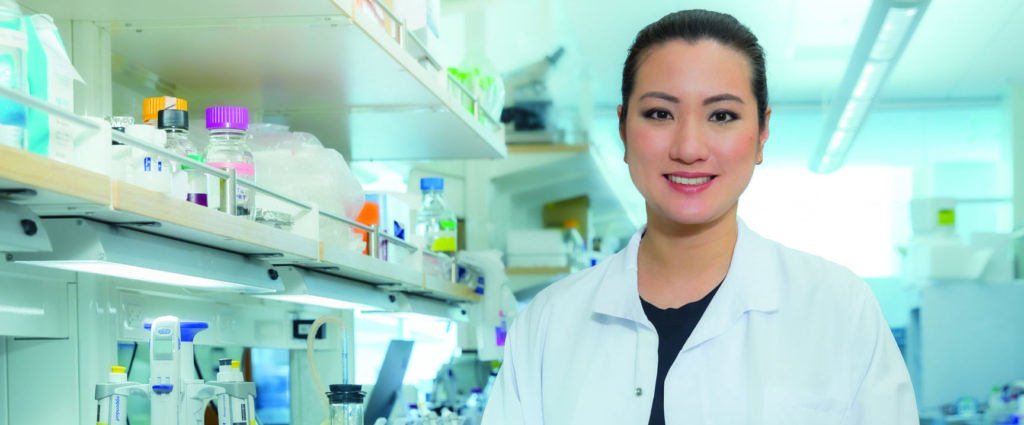A New Weapon in Pediatric Cancer Treatment for Hawai‘i
CHEMOTHERAPY, SURGERY, AND RADIATION HAVE BEEN THE MAIN PILLARS of cancer treatment for many decades. While they remain at the forefront against the war on cancer, new categories of treatments have emerged over the years that have revolutionized the scope and effectiveness of cancer therapy, while lessening or eliminating some of the commonly associated side effects.

Over the past decade, immunotherapy, which utilizes the patient’s own immune system to attack cancer cells, has picked up considerable momentum and is quickly becoming recognized as a fourth pillar of cancer treatment. Of these immunotherapy treatments, chimeric antigen receptor T-cell (CAR T-cell) therapy, has garnered the attention of researchers and oncologists around the world, especially for treating certain cancers in children that are no longer responding to standard treatments.
One of the staunch advocates of CAR T-cell therapy is University of Hawai‘i Cancer Center (UH Cancer Center) Researcher Stephanie Si Lim, MD, a pediatric oncologist who has been instrumental in bringing this promising new cancer treatment to Hawai‘i.
As a youngster growing up on Hong Kong, Si Lim always knew that her love for children that blossomed from an early age would determine her career path, either as a teacher or a pediatrician. Eventually, through her biological sciences classes and volunteer work in a pediatric oncology ward during high school, Si Lim developed a keen interest in human physiology and anatomy, which ultimately led her to choose medicine as her career. That passion and drive would eventually lead her to obtaining a Bachelor of Science degree in biology from Pepperdine University, a medical degree from the Georgetown University School of Medicine and a prestigious residency and fellowship training in pediatric hematology/oncology at the Children’s Hospital of Philadelphia (CHOP), an internationally recognized leader in advanced pediatric medicine.
While at CHOP, Si Lim trained under noted pediatric oncologist Stephan Grupp, MD, who treated the first ever pediatric patient with relapsed/refractory B cell acute lymphoblastic leukemia (B-ALL) with CAR T-cell therapy. This groundbreaking clinical trial eventually led to the first and only FDA approved product for children and young adults with B-ALL, the most common cancer found in this age group.

“I was fortunate to be mentored by some of the leading pioneers and world-class experts in CAR T-cell therapy, and witnessed firsthand what a life-saving therapy this could be. That’s what inspired me to bring this cutting-edge therapy to Hawai‘i, so that our community can also have access to this treatment without having to travel to the mainland for long periods of time.”
– Stephanie Si Lim
According to Si Lim, the body’s immune system usually works by detecting foreign substances, known as antigens, on the cell surface. Immune cells such as T-cells contain specific receptors that attach to these antigens and trigger the body’s immune response to destroy the foreign substance. Cancer cells also have antigens, but if the immune cells are overwhelmed and cannot effectively recognize such antigens, then they fail to do their job to clear out the cancer cells.
In CAR T-cell therapy, T-cells are collected from the patient’s blood and modified in the laboratory to introduce an engineered receptor, known as a chimeric antigen receptor or CAR, that will allow the T-cell to bind with the specific cancer cell antigen. The CAR T-cells are then grown, multiplied to sufficient quantities through a process that takes several weeks and are then infused back into the patient.
“CAR T-cell is a very novel therapy for cancer as it can target specific antigens to selectively remove and kill the tumorous cells, while sparing the non-affected healthy cells,” said Si Lim. “As a result, unwanted side effects like hair loss, nausea or mouth sores from traditional chemotherapy or radiation treatments are minimized or eliminated.”
In addition to her role at the UH Cancer Center, Si Lim is also a faculty member at the University of Hawai‘i at Mānoa’s John A. Burns School of Medicine and has a clinical practice in pediatric oncology at the Kapiolani Medical Center for Women and Children, one of four medical centers under Hawai‘i Pacific Health (HPH), and one of Hawai‘i’s largest healthcare providers. As Physician Leader for HPH’s Cellular Immunotherapy Program, in June 2022, Si Lim orchestrated a joint initiative between HPH and the UH Cancer Center to bring CAR T-cell treatment and clinical trials to Hawai‘i.
“Stephanie has been a tremendous addition to our staff of world-class cancer researchers at the UH Cancer Center,” said Joe W. Ramos, former interim director of the UH Cancer Center. “Through her extensive experience and training in CAR T-cell therapy, Stephanie is not only bringing a new level of cancer care to pediatric patients in Hawai‘i, but is also bringing important clinical trials that will benefit from our state’s multiethnicity — a strength of the UH Cancer Center.”

While there still remain many unanswered questions in pediatric oncology, Si Lim’s current research focus is on ethnic disparities in adoptive cellular immunotherapy, specifically in CAR T-cells. She hopes to better understand if race and ethnicity play a part in patient outcomes when receiving CAR T-cell therapy, as current trials have not addressed this factor.
“Hawai‘i has a very unique demographic known as a minority-majority population, where Asians and other underrepresented populations are the majority,” said Si Lim. “With the results from our clinical trials, we will be able to compare our patient outcomes with the outcomes for patients on the mainland, where there is a 70 to 80 percent representation of Caucasians — enabling us to get a more accurate picture of the therapy’s effectiveness in a more diverse population.”
The introduction of CAR T-cell therapy to Hawai‘i also improves access to the cutting-edge therapy for underserved populations, including Native Hawaiians, Pacific Islanders and residents on the Neighbor Islands that previously was close to impossible — requiring travel to the mainland for treatment in places like Seattle or San Francisco, separation from family and friends for more than three months and the incurrence of huge travel and lodging expenses.
“Imagine being in a foreign place with a very sick child whose outcome is unknown and without your family support group — that’s insane!” said Si Lim. “Now patients can feel more at ease by being home with their family members and close support network, and have a better chance of recovery, since we often find that the emotional support is just as important as their medical care.”
For Si Lim, it has always been about the children. While there have been some losses, they serve as further motivation to find out why a patient didn’t respond to therapy and what can be done better in the medical and scientific community to help more children survive.
“I think pediatric oncology itself is a beautiful field, comprising of being both a primary care and an acute care physician,” said Si Lim. “In addition to taking care of the patient, I get to form a lasting relationship with the family for the duration of when they’re with me and become a part of their support system — which I think is very special and rewarding.”

